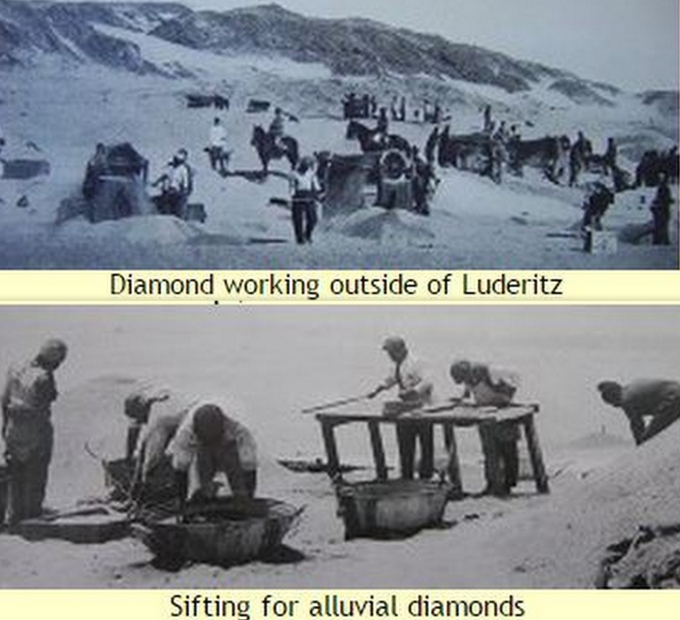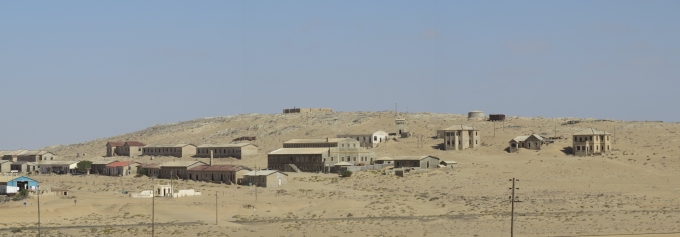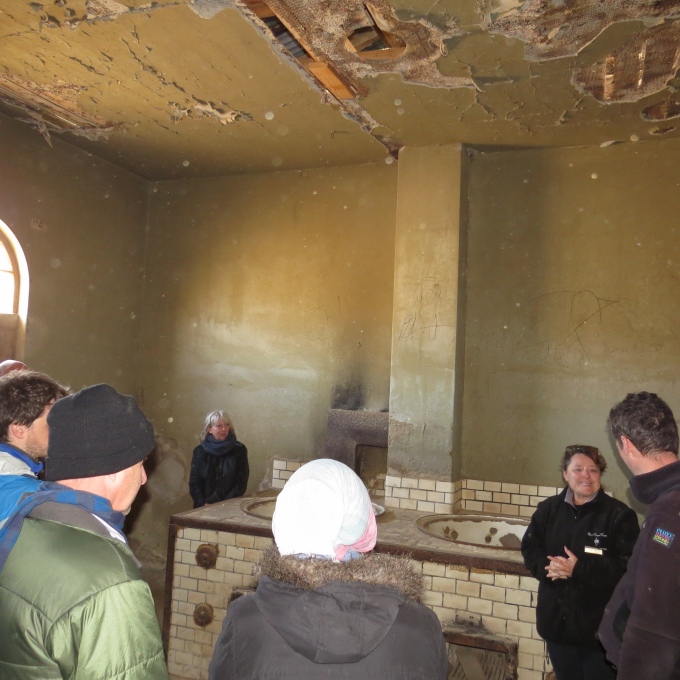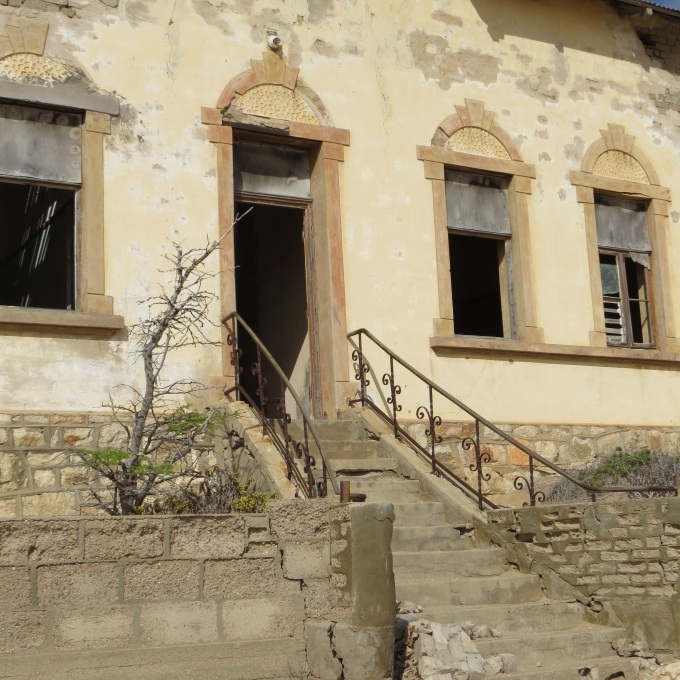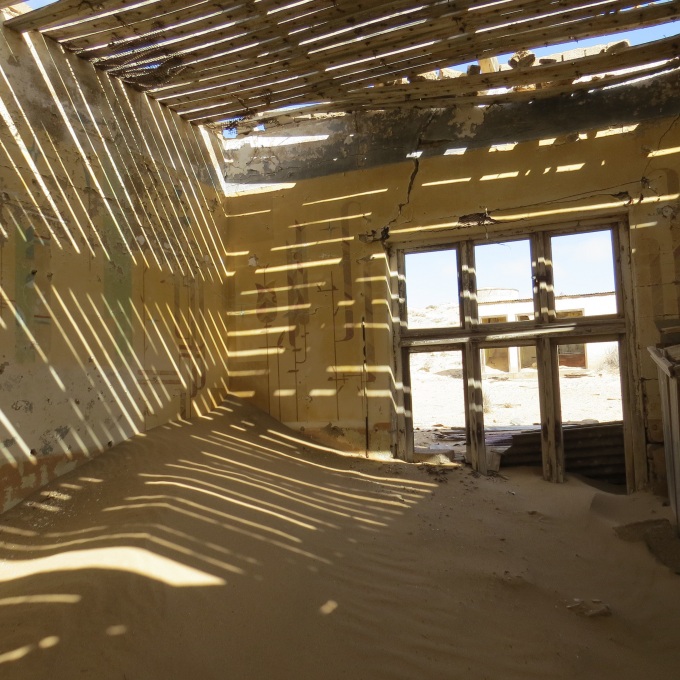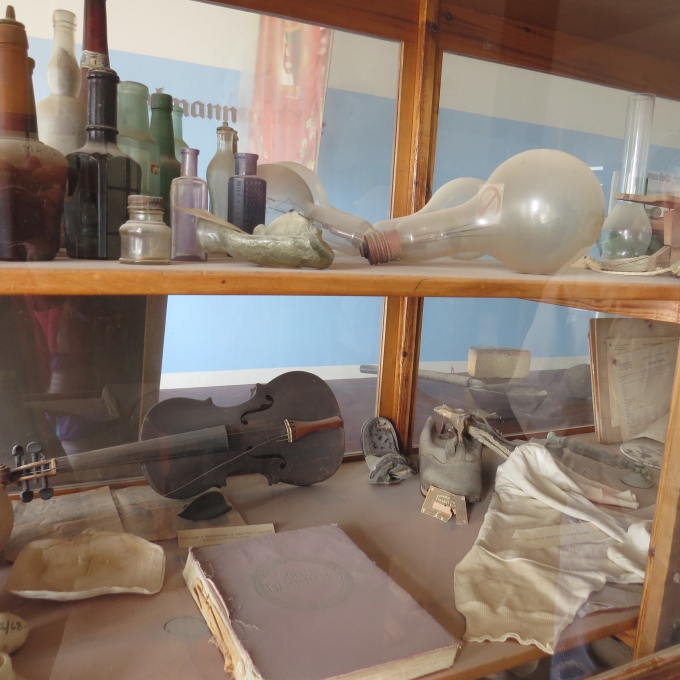Kolmanskop - A Diamond Mining Ghost Town
/What better way to spend the rest of David's birthday and our belated wedding anniversary celebration than in a ghost town? We've certainly been to ghost towns in the old Wild West … usually abandoned when the gold and/or silver ran out. Here, it's diamond ghost towns. We purchased the N$80 (~US$7) admission tickets from Liz at Luderitz Safari & Tours and headed 10km (6 miles) out of town into the desert to once vibrant, now abandoned Kolmanskop (aka Kolmanskuppe).

In 1907, railroad worker Zacharius Lewala found a shiny stone and gave it to his boss, August Stauch, who subsequently found many more “shiny stones”, quit his job and filed a mining claim in the area. As soon as word got out, a diamond rush ensued and, by 1908, diamond fever was rampant. “All the available ground in the vicinity of Luderitz was quickly pegged out and claimed. Laborers, organised in search lines and muffled against the blowing sands, crawled along on all fours armed with jam jars. The diamonds were picked off the ground and the jars filled rapidly. One of the first discoveries was made just before nightfall, so prospecting continued long into the night, with the glimmer of stones identifiable by moonlight.”
By 1912, Kolmanskop had become one of the richest towns on the planet with all the luxuries imaginable. It had its own Millionaire's Row, a large outdoor swimming pool, a bowling alley, a gym and entertainment hall, the first tram in Africa and even an ice making factory! A state-of-the-art 200-bed hospital had been built which boasted the first X-ray machine in the southern hemisphere. The x-ray machine was not however, expressly for broken bones, it was used frequently to detect diamonds “hidden” on workers' bodies.
It was cold, overcast and windy when we arrived. A 25-knot southerly wind whipped up the sand into our faces and eyes. I could taste the grit in my mouth and my face stung. The guided tour started right on time at 0930 and lasted about 45 minutes. Because of the cold wind and blowing sand, part of the tour was conducted from the inside of the hall. Jannie, the guide, pointed out structures of interest through the windows and provided each building's history. When we did head outside, we worked hard to stay in the lee of the buildings, then all clambered inside a building together to hear Jannie's spiel.
Once the tour had ended, we were left to our own devices to wander and explore the buildings. Severe warnings were issued, however, that the buildings were old, decrepit and unstable, many supported only by the sand dunes that had encroached upon them.
The wind calmed a bit, the sun came out and it warmed up. We tramped through the sand to each building. The grand houses showed signs of prosperity and once-elegant living.
We entered and tentatively picked our way across rotten timber floors and sand, peeking into long-abandoned rooms where diamond boom barons once dwelled with their families.
The filtered light played games with the plaster-less ceilings and missing rafters, casting interesting shadows on the sand.
I marveled at the decorative wall stenciling and scraps of old wallpaper that clung to the cracked and crumbling walls and had managed to survive despite the conditions.
Though we were warned of snakes, we didn't see any. The area is a protected brown hyena region, but we didn't see any hyenas either. We did, however, see an interesting fogstand beetle trudging through the sand. Their bumpy backs allow them to trap moisture from fog on their backs and thus quench their thirsts.
Entering the “krankenhaus” (hospital) was a bit eerie. There was a long corridor with rooms off to each side. Once nurses quietly tread these halls tending to their patients. Now only sand and rubble remained, the parched, desert dryness preserving what had not been stripped away when the town was abandoned. The sound of the howling wind and blowing sand were the only sounds beyond our muffled footfalls. The picture I took of David roaming the halls took on a ghostly air.
David could not resist checking out the old fuse boxes and electrical connections that remained behind. The town was officially abandoned in 1957-1958 when the diamonds petered out here and a new supply of bigger diamonds was found in Oranjemund near the mouth of the Orange River.
We popped our heads into the old museum. Odd mementos and paraphernalia from a long forsaken town were covered in dust and sand.
In 1980, it was the DeBeers Company (diamond monopolizers extraordinaire), that restored a number of the buildings and established Kolmanskop as a open-air museum and tourist attraction. Certainly, the hours we spent at Kolmanskop were fascinating. We heard the unsettling cackle of a pied crow sitting in the paneless window of an old building, eyeing us, and thought it was a fitting end to the day.
I emptied about a ton of sand from my shoes before we climbed back in the car. No sense in bringing the desert back aboard the boat.


